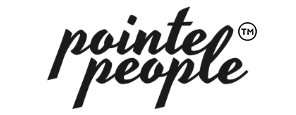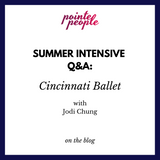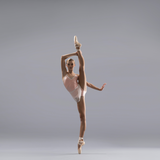The time you spend at the barre is vital to your dancing.
But just as important is your time off the barre. And that’s not just warming up or running through tonight’s rehearsal steps or eating healthy. That means what may seem like the last thing you need on a full dancer’s day: a nap.
That’s right. It may sound counterintuitive—shouldn’t you be working harder or stretching more?— but taking naps, and generous ones during the day is a great way to stay in your top performance and even improve on where you are now.
Naps are truly your superpower because the majority of your muscle growth and repair takes place when you sleep. When you’re in class or practice, your muscles are constantly undergoing micro-tears, a natural inflammatory response to motion and use. When you stop dancing and rest, that’s when your body is able to repair the damage by repairing your muscles and adding new proteins to make them even stronger. In sleep and naps, the resting of your other body systems allows muscle repair to take center stage.
Naps also allow you to mentally rest from the intense brainpower dancing takes. Sure, you could be sitting in the hallways going over a later part, but will stressing and reviewing really help you remember the steps you already know? When you take a nap, you give your brain a rest which actually allows you to process the information you’ve learned that day, moving information from your short term working memory to your long term memory. You wake up both refreshed and with everything you’ve taken in that day better processed for when you’ll need it later.
If you’re still not convinced, consider that naps are also tried and true by professional dancers. David Hallberg in his autobiography, "A Body of Work”, talks about Gillian Murphy’s famous two-hour naps, and his own thirty to sixty-minute naps for recovery. It’s also not uncommon for famous Olympic athletes to discuss in their autobiographies about a grueling training regime set off by long, deep naps.
Of course, it’s easy to take a mid-day nap and suddenly wake up more tired than you started. It’s good for this reason to avoid 30-minute naps which research shows leaving you feeling “groggy” for up to thirty minutes afterward. Instead, time your naps to a schedule for maximum benefits, or “power naps”, will help you fit your recovery time into a busy ballet schedule. Choose your nap time based on what you want to boost:
- 10 - 15 minute naps for increased alertness.
- 60-minute naps for increased memory and enhanced creativity.
- 90-minute naps to enhance problem solving and increase bodily coordination processing.
Another way to improve your napping is to take the Circadian rhythm test for your best nap time. Record at the beginning of each hour you are awake for a day how energetic you feel on a scale of 1 - 10. Try tucking a notebook or notepad onto the sidelines or in your dance bag for recording. Repeat this for 7 days. Then look over your recordings and see when your energy is highest and when it is lowest. Use this to find times in your schedule that would be best for your rest.
Many people’s Circadian Rhythm can drop in the afternoon or 3-4 p.m., but your time may be individual. Rather than pushing yourself through this tiring time with nothing to show but fatigue, give yourself a nap to wake up stronger than ever for the rest of the day.
As with any health tips, make sure you are listening to your body to find the best rhythm for your nap length and timing.
To help yourself fall asleep faster, try finding a colder area to rest (you fall asleep faster when your body temperature is lower) or lowering your body temperature by stepping outside, drinking cold water, or using an ice pack behind your neck.
You can also use special memory tricks to help yourself sleep. Use the same blanket each time or dab a specific scent on your wrist before napping. Try putting together a mental visualization of yourself falling asleep to help yourself drift off. Putting on an eye mask or earbuds may also help to block out the environment. Put your phone off (an Instagram scroll does not count as rest) and stay away from caffeine till after waking.
Don’t worry if you can’t nod off. Even closing your eyes will help limit your brain processing and calm you for recovery.
Finally, don’t forget to set an alarm! Even if naps will help your dancing, they won’t if you wake up late for rehearsal!
Photo Credit: Madison Keesler (& Olive!) of San Francisco Ballet
Sources
Hallberg, D. Body of Work: Dancing to the Edge and Back. 2017. Atria Books.
Walia, A. 2015. The Science Behind Power Naps & Why They’re So Good for You. Collective Evolution. https://www.collective-evolution.com/2015/08/12/the-science-behind-power-naps-why-theyre-so-good-for-you/
Underwood, K. White, J. Life of an Athlete. Sleep and Recovery. https://www.wm.edu/offices/sportsmedicine/_documents/sleep-manual



